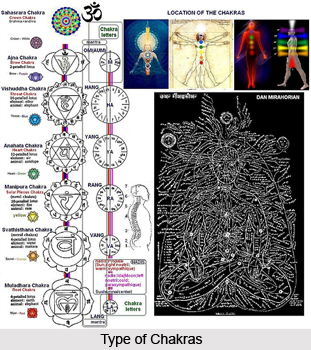 The fifty-fourth yogic sutra speaks about the supreme effort that one makes to withdraw oneself from the contact of external objects. In turn, one attracts the senses towards one`s inner mind, the seer. This is pratyahara. The mind, senses and concentration are the major players here. The mind cannot function without the senses, and hence if the senses stop exciting the mind, it ceases to exist. This is the first path to renunciation - the retun to the Maker. Consciousness also arouses the mind to perceive the external objects, to crave for more pleasure. However, through pratyahara, a sadhaka is successful to curb both the mind and senses.
The fifty-fourth yogic sutra speaks about the supreme effort that one makes to withdraw oneself from the contact of external objects. In turn, one attracts the senses towards one`s inner mind, the seer. This is pratyahara. The mind, senses and concentration are the major players here. The mind cannot function without the senses, and hence if the senses stop exciting the mind, it ceases to exist. This is the first path to renunciation - the retun to the Maker. Consciousness also arouses the mind to perceive the external objects, to crave for more pleasure. However, through pratyahara, a sadhaka is successful to curb both the mind and senses.
sva their own
visaya objects
asamprayoge not coming in contact with
cittasya of the thinking faculty, of the conscious faculty
svarupa own form, natural form
anukarah imitation, following
iva as if, as it were
indriyanam senses
pratyaharah (prati + ahg + hr = pratyahara, i.e., to draw towards the opposite. Prati = opposite, against, in return; ahg = near, near to, towards, strength; hr = to take, bear, carry; hr is the root of pratyahara) drawing back, marching back, retreating, restraining, withholding, withdrawal of the senses.
Withdrawing the senses, mind and consciousness from contact with external objects, and then drawing them inwards towards the seer, is pratyahara.
Now the mind is able to concentrate and the senses no longer pester the mind for their satiation. They lose interest in the tastes and flavours of their respective objects, and are drawn back from the external world in order to help the mind in its inner quest. This is pratyahara.
This is the basis of the path to renunciation. As a bird cannot fly if one of its wings is cut off, so is it in the case of the sadhaka. The two wings of yoga are practice, from yama to pranayama, and renunciation, from pratyahara to samadhi. Both are necessary for flights. Then the yogi dwells in his soul, perceiving all things directly, without the intrusion of citta - the conscious faculty.
In ordinary everyday life, consciousness helps the senses see the objects of the world with thoughts of acquisition, rejection and resignation. They become hypnotised by them, and are drawn outwards, towards pleasure. In pratyahara, the senses are directed inwards, towards the realisation of the soul. Pratyahara is the withdrawal of the mind from its contact with the senses of perception and organs of action; then its direction is towards the soul.
The relationship between the mind and the senses is justly compared to that of bees following the queen bee. If the queen bee moves, the others follow. When she rests, the others rest. They do not function independently from their queen. Similarly, when the mind stops, the senses, too, stop working. This is pratyahara. It is the beginning of man`s return journey towards his Maker. It is the science of restricting the senses by depriving them of that that feeds them - the external objective world. It liberates them, by denying the supply of nourishment in the form of desires and their fulfilments.
By controlling the senses and mind, the sadhaka draws ana towards its source - the soul, atnux, and through attna to Paramatma, God. For instance, while performing an asana the intelligence of the body stretches outwards, and the senses of perception, mind and intelligence are drawn inwards. It is the same in the performance of prdnayama. This is pratyahara.
To summarise - Nature consists of five gross elements : earth, water, fire, air and ether with their five subtle counterparts : smell, taste, shape, touch and sound. These interact with the three gunas - saliva, rajas and tamas. Citta, comprising ego, intelligence and mind is the individual counterpart of mahat, cosmic intelligence. This cosmic intelligence is the unevolved primary germ of nature, or the productive principle, for creation of all phenomena of the material world. There are also the five senses of perception - ears, nose, tongue, eyes and skin - and five organs of action - legs, arms, speech and the organs of generation and excretion.
The five senses of perception come in contact with sound, smell, taste, sight and touch, send their impressions to the mind and are stored in the memory. Memory craves for further experiences and propels the mind to evade intelligence and tap the senses for yet more sense gratification. This in turn motivates the mind to seek further experiences through the organs of action. All through this process, intelligence measures advantages and disadvantages in order to counteract memory, mind and senses which, recollecting the taste of past pleasures, are passionate for more. Almost inescapably, intelligence stays disregarded. Through over-stimulation and misuse, the organs of action lose their power and are no longer capable of stimulating the organs of perception or the mind.
Owing to the force of past impressions, one continues to ache after renewed sensation. But one can never be satiated. This spawns unhappiness and dissatisfaction. Here lies the true role of pratyahara, the fifth aspect of yoga.




















